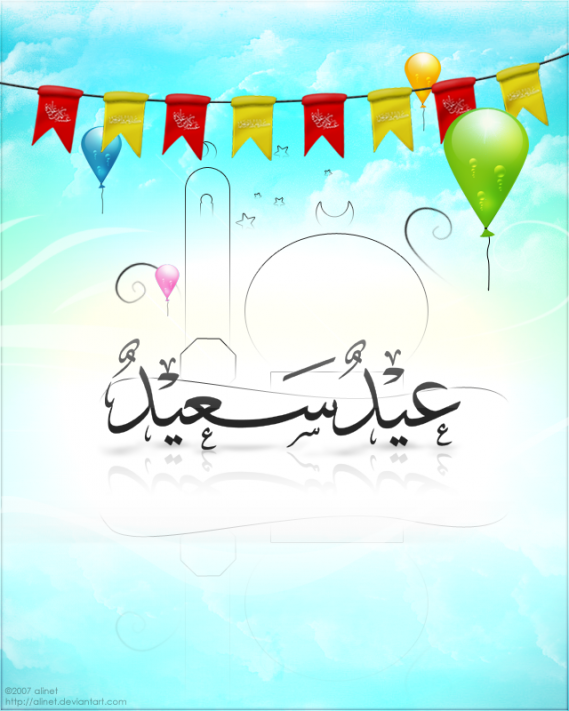Eid Mubarik to all our brothers and sisters.
May Allah tala accept your ibada (sacrifice, fasting, Qur’an reading, ziker, Salah, charity and all good deeds) ameen ameen amee
Eid-ul-Adha (‘festival of Sacrifice’), also known as the Greater Eid, is the second most important festival in the Muslim calendar.
The festival remembers the prophet Ibrahim’s willingness to sacrifice his son when God ordered him to.
The story of Ibrahim’s sacrifice:-
Eid-ul-Adha celebrates the occasion when Allah appeared to Ibrahim in a dream and asked him to sacrifice his son Isma’il as an act of obedience to God.
The devil tempted Ibrahim by saying he should disobey Allah and spare his son. As Ibrahim was about to kill his son, Allah stopped him and gave him a lamb to sacrifice instead.
Celebrations:-
Eid ul Adha is a public holiday in Muslim countries.
This day Muslims all over the world who can afford it , sacrifice a sheep (sometimes a goat) as a reminder of Ibrahim’s obedience to Allah. In Britain, the animal has to be killed at a slaughterhouse.
They share out the meat among family, friends and the poor, who each get a third share.
Eid usually starts with Muslims going to the Mosque for prayers, dressed in their best clothes, and thanking Allah for all the blessings they have received.
It is also a time when they visit family and friends as well as offering presents.
At Eid it is obligatory to give a set amount of money to charity to be used to help poor people buy new clothes and food so they too can celebrate.
The Hajj:-
The Hajj is pilgrimage to Makkah.
It is the Fifth Pillar of Islam and therefore a very important part of the Islamic faith.
All physically fit Muslims who can afford it should make the visit toMakkah, in Saudi Arabia, at least once in their lives.
Every year around 2 million Muslims from all over the world converge on Makkah.
They stand before the Kaaba, a shrine built by Ibrahim praising Allah together.
The Hajjis or pilgrims wear simple white clothes called Ihram which promote the bonds of Islamic brotherhood and sisterhood by showing that everyone is equal in the eyes of Allah.
During the Hajj the Pilgrims perform acts of worship and they renew their faith and sense of purpose in the world.
Extra information:-
It is celebrated on the tenth day of the lunar month of Dhul-Hijjah.
On the ninth day of Dhul-Hijjah, pilgrims proceed to the plains of the Mount of `Arafah, outside Makkah and they spend their time totally in worship. This is the core of the worship of Hajj, without which no Hajj is said to have been performed. On that evening, pilgrims proceed from Arafah to Muzdalifah.
Early in the morning of the 10th day of Dhul-Hijjah, the pilgrims having offered their prayers at Muzdalifah, proceed to the three pillars to cast seven stones at the symbols of Satan. This ceremony of casting stones has been performed since the days of Prophet Ibrahim (Abraham) (peace be upon him).
It is a ceremony which indicates that one should cast away the evil of Satan repeatedly and resolve never to listen to him again, nor to succumb to temptations. In fact, the word for the casting process in Arabic is “rajm”, which means throwing of stones.
Then, pilgrims return to Mina, with a pure slate of mind and heart, where they perform the sacrifice of animals. This process commemorates the event when Prophet Ibrahim was about to sacrifice his most beloved treasure, his son…
It was Ismail–his beloved and righteous son–who was destined also to become a prophet. He is known as “Adh-dhabih”, or the chosen sacrifice of Allah.
For those who did not go to Hajj, this year–like most of us–it is celebrated as a feast. We begin with the prayers of Eid, following which, sacrifices of animals are made and the meat is shared with the poor.
There is a difference between mere charity and sacrifice. Charity is a regular all-time practice of helping the needy and no particular day is fixed for it. This is while sacrifice is an annual ritual, which is to be performed on the prescribed days commencing with Eid al-Adha.
